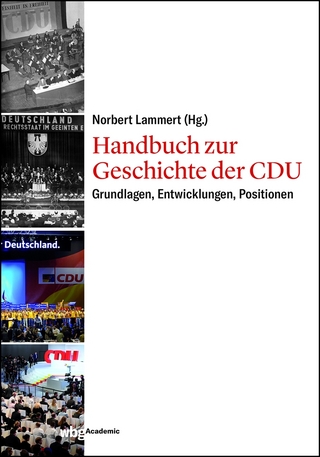
Slaying the Nimby Dragon
Seiten
2017
Routledge (Verlag)
978-1-138-51458-4 (ISBN)
Routledge (Verlag)
978-1-138-51458-4 (ISBN)
A mob scene erupted in April 1990 in the sleepy hamlet of Caneada, a small town on the northern edge of the Allegheny Mountains. In addition to riots and numerous arrests, six senior citizens, handcuffed to a heavy chain, formed a human barricade across the steel bridge spanning the Genesee River. Their purpose was to prevent the siting commission of a low-level radioactive waste dump from getting across the bridge. In the past few decades, finding sites for undesirable facilities, such as prisons and garbage landfills, has become ever more difficult. The difficulty lies not in tracking down technically suitable sites, but in the so-called NIMBY syndrome. People might agree that a facility is desperately needed just as long as it is Not In My Backyard. The unfortunate results of this proverbial game of hot potato are ever-mounting social and economic costs. State and local governments will continue to spend small fortunes finding sites to facilities that everyone desires hi principle but nobody seems to want on their block.
In Slaying the NIMBY Dragon, Herbert Inhaber draws on the experience of many NIMBY cases. He discusses new approaches to overcoming NIMBY, such as . the reverse Dutch auction. Reverse, because undesirable objects are being auctioned. This market approach holds promise for meeting the objections of potential neighbors of a LULU (Locally Unwanted Land Use) as well as society's need to get the facilities built. According to Inhaber, a site auction works better than negotiation the community handles it on their own, and when they are satisfied with a site they offer a bid. The hefty bonus would go to the first county that agrees to have a site built in their backyard. Psychological components of the NIMBY syndrome are also discussed logical objections and why people think as they do about LULUs. Inhaber believes that the trick to handling this problem is to take account of these personal sentiments and accomplish the nation's work at the same time.
Inhaber adopts an optimistic approach to a problem that many believe has become a national fixture with no solution. The nuclear industry has been trying, without success, to dispose of its waste for about four decades, to take just one example. Inhaber believes there is a way to assuage the fears of an affected community while simultaneously preserving the environment and the people. This book will be of interest to environmentalists, developers, policymakers, and those in the fields of waste industry, nuclear, and risk analysis.
In Slaying the NIMBY Dragon, Herbert Inhaber draws on the experience of many NIMBY cases. He discusses new approaches to overcoming NIMBY, such as . the reverse Dutch auction. Reverse, because undesirable objects are being auctioned. This market approach holds promise for meeting the objections of potential neighbors of a LULU (Locally Unwanted Land Use) as well as society's need to get the facilities built. According to Inhaber, a site auction works better than negotiation the community handles it on their own, and when they are satisfied with a site they offer a bid. The hefty bonus would go to the first county that agrees to have a site built in their backyard. Psychological components of the NIMBY syndrome are also discussed logical objections and why people think as they do about LULUs. Inhaber believes that the trick to handling this problem is to take account of these personal sentiments and accomplish the nation's work at the same time.
Inhaber adopts an optimistic approach to a problem that many believe has become a national fixture with no solution. The nuclear industry has been trying, without success, to dispose of its waste for about four decades, to take just one example. Inhaber believes there is a way to assuage the fears of an affected community while simultaneously preserving the environment and the people. This book will be of interest to environmentalists, developers, policymakers, and those in the fields of waste industry, nuclear, and risk analysis.
Herbert Inhaber
1: A NIMBY Overview: How it has Prevented the Establishment of Needed Facilities; 2: A Personal Story: How I Went from Nerdism to Devising Siting Solutions; 3: What Doesn’t Work in Siting Unwanted Facilities; 4: What Can Work—The Reverse Dutch Auction Slays the NIMBY Dragon; 5: What the NIMBY Literature Tells Us; 6: Perception and Psychology of Unwelcome Guests; 7: Economics of Auctions; 8: Compensation and Its Relation to Auctions; 9: Some Examples of How Dollars and the Environment Can be Compatible; 10: The Rich and the Poor: Will an Auction System Discriminate against the Latter?; 11: The Reverse Dutch Auction Offers an Exit from the Maze
| Erscheinungsdatum | 19.12.2017 |
|---|---|
| Verlagsort | London |
| Sprache | englisch |
| Maße | 152 x 229 mm |
| Gewicht | 453 g |
| Themenwelt | Sozialwissenschaften ► Politik / Verwaltung |
| ISBN-10 | 1-138-51458-6 / 1138514586 |
| ISBN-13 | 978-1-138-51458-4 / 9781138514584 |
| Zustand | Neuware |
| Haben Sie eine Frage zum Produkt? |
Mehr entdecken
aus dem Bereich
aus dem Bereich
die Weltmacht im Hintergrund
Buch | Softcover (2022)
Klarsicht Verlag
CHF 30,80
Grundlagen, Entwicklungen, Positionen
Buch | Hardcover (2023)
wbg Academic (Verlag)
CHF 55,95


